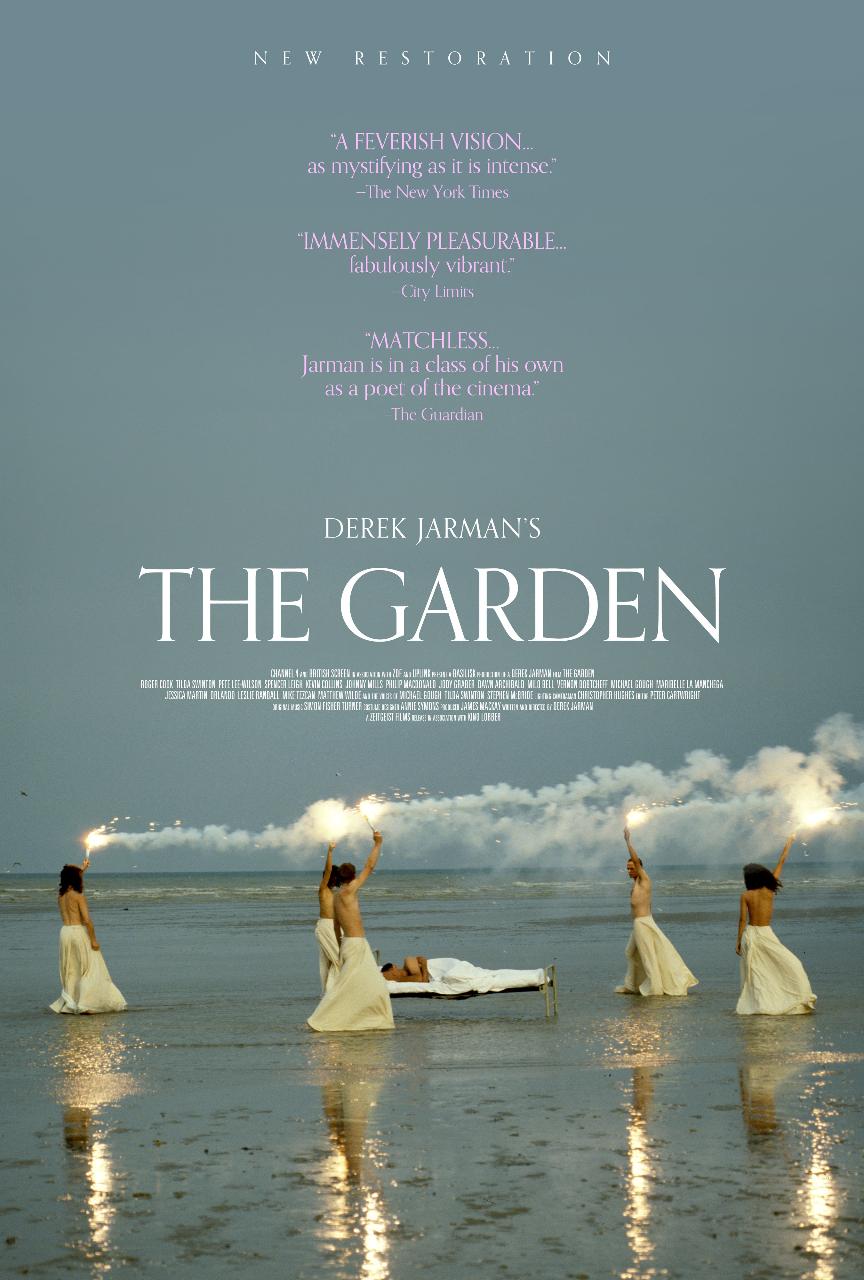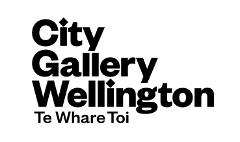Film Screening: The Garden (1991)

- Duration: 120 Minutes (approx.)
- Location: Welington Central , Wellington
City Gallery Wellington Te Whare Toi is proud to present a screening of Derek Jarman’s
The Garden, 1991, (95mins). This event is one of three screenings of Jarman’s feature length films, selected and introduced by key members of Aotearoa’s art community who hold Jarman close.
This screening will be held at City Gallery Wellington’s Adam Auditorium in Te Ngākau Civic Square. Doors to the foyer will open from 6.30pm, with a cash bar and refreshments on arrival. Doors to the auditorium will open at 6.45pm and the screening will commence at 7.00pm with pre-recorded introduction by author and writer Samuel Te Kani (Ngāpuhi).
The Garden—Derek Jarman’s Tree of Life
– Samuel Te Kani
Like most fever dreams, in Derek Jarman’s The Garden (1990) you’ll glimpse the strangely familiar, which might be due in part to those Jungian synchronicities of a collective image system (ocean?); but is also a result of the film having been a quiet but diffuse influence for several decades. Take Jarman’s Judas, here a suicidal biker—his deranged tongue lolling and stained from an American flavour of credit and ribald consumerism. He lurches in his noose while a suited exponent of purchasing power sermonizes on the sublime satiation available to everyone, if only they’d buy more. It might seem like a stretch to link Lady Gaga’s Judas to Jarman’s, but then also not. Where else had he appeared as a biker? And being a self-described lover of the gays with tenuous avantgarde leanings, it’s easy to see the song (and video) are in fact Jarman cues.
Then there’s Terance Mallick. I can’t say for sure if the filmmaker consciously wrung The Garden for its kaleidoscopic tour of a pastoral sublime, but certainly it shares conceits and rhythms with The Tree of Life. Both films unravel personal histories against backdrops of nature, sweeping scores, and the painful brevity of mortal beings. And both are thinly veiled self-portraits; Mallick’s more obliquely (obtusely?), Jarman’s wearing its authorial presence on its sleeve, with actual footage of the artist dreaming, writing, reading—the armchair philosopher finally getting up from his pose of pensive alienation and burning the seat from under him. I guess this is technically a ‘spoiler’. But also, the function of a film like Jarman’s is not the conventional contraction and release of plot delivery. Rather, the images are layered and sequenced to elicit disorientation, to titillate and overwhelm, and hopefully early on divest an audience’s expectations pf a three-act structure. The point is not to think your way through The Garden, but to feel (and fuck) your way.
Finally, The Garden ultimately stands as an act of transmutation, applying the filmmaker’s alchemy to a spiritual struggle with the cruelties of state-making, nationhood, and the abjection relegated to those cross-sections of humanity who (for whatever reason) fall outside the strata of the legitimate and elect. For Jarman the brunt of England’s imperial ignorance was felt in its lethargy around the AIDS crisis, in which society was allowed to splinter emphatically into those deserving of life, and those irrevocably stained by their own choices, and left to die. It is perhaps this most of all that sets Jarman apart from his contemporaries (Kenneth Anger comes to mind) in which the ghettoizing of queers and gays was no longer tenable. Therefore, Jarman’s art attempts a broader context of religious iconography, and of grace, extended to the margin dwellers—despite the very material stigma of HIV and AIDS, and its damning theocratic conflation with original sin. A conflation which Jarman defies by folding the Nuclear Uncanny of Dungeness into the vision. As if to say, what exactly is this Nature with a Capital N from which we aberrate? The Garden, being lovely dark and deep, holds all.
_
DerekJarman: Delphinium Days is presented in partnership with The Dowse Art Museum. It has been co-developed by Gus Fisher Gallery and City Gallery Wellington Te Whare Toi. It is co-curated by Lisa Beauchamp, Curator of Contemporary Art at Gus Fisher Gallery, Aaron Lister, Senior Curator (Toi) at City Gallery Wellington Te Whare Toi, and Michael Lett. This exhibition was made possible with the lead support of Tony Kerridge and Micheal Do, with additional support of the City Gallery Wellington Foundation, the Delphinium Days Exhibition Circle, and those who wish to remain anonymous. The Wellington Public Programme is brought to you by The British Council New Zealand and the Pacific. With thanks to Howard Sooley, Gordon Rainsford, Denis Doran, the Keith Collins Will Trust and Amanda Wilkinson, London. Films courtesy of LUMA Foundation and James MacKay.
_
The Wellington Public Programme is brought to you by The British Council New Zealand and the Pacific.




